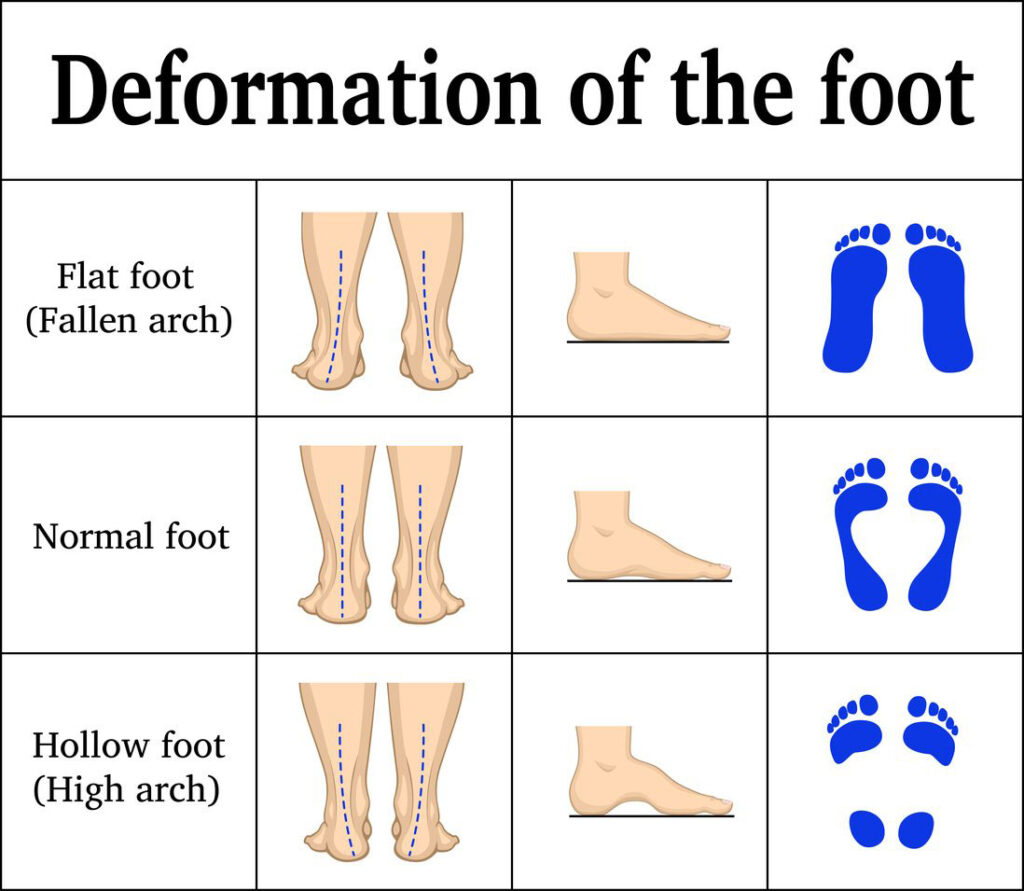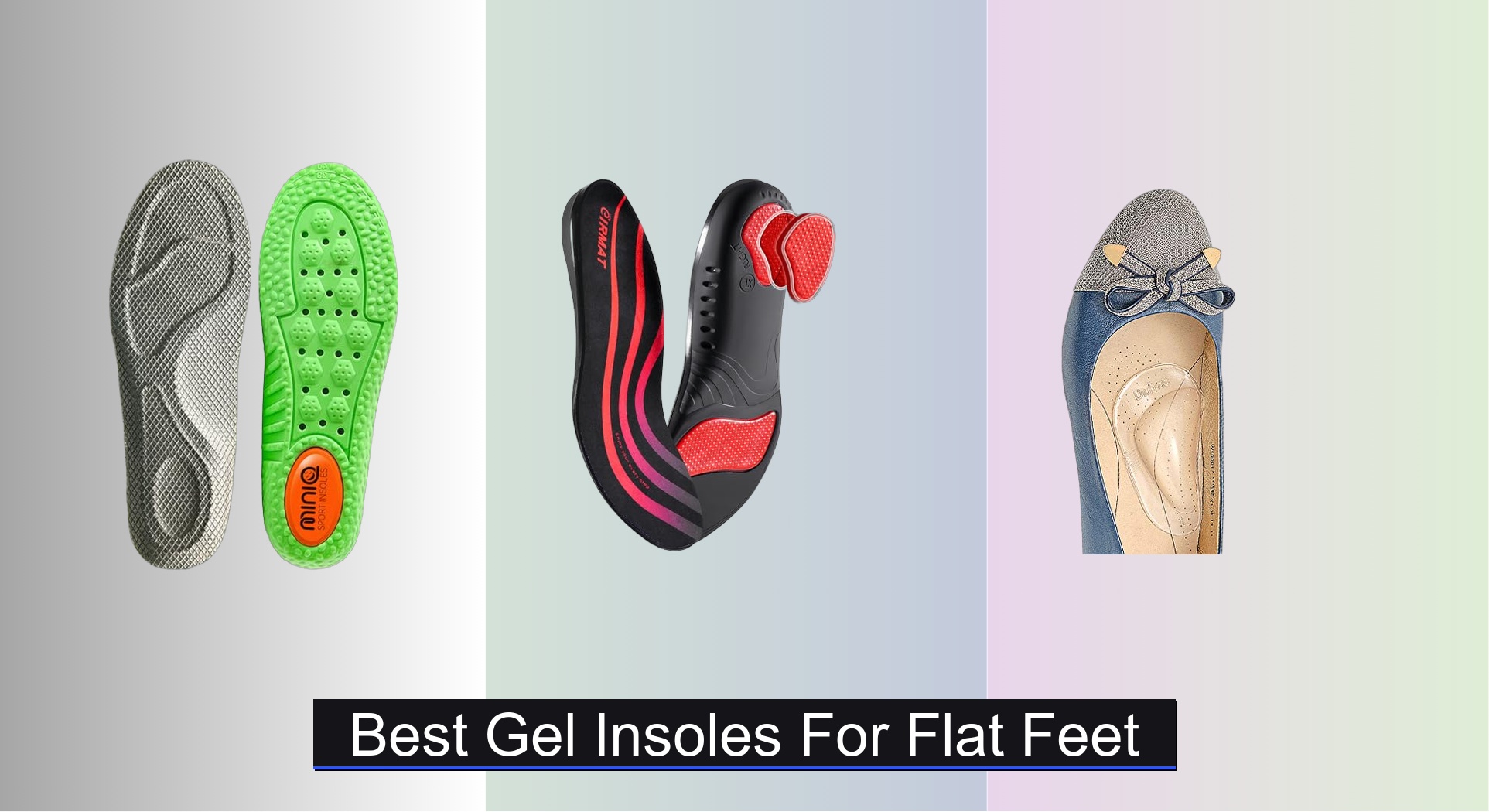Introduction
Your feet carry you through life, so it’s no wonder they’re called the foundation of the body. But not all feet are built the same. Some people have flat feet with little to no arch, while others have high arches that create a pronounced curve. Both conditions have their unique implications for overall health and mobility. Understanding these differences can help you better care for your feet, select proper footwear, and manage any associated discomfort. Let’s dive into the comparison of flat feet and high arches to explore what each means for your body.
What Are Flat Feet?

Flat feet, also known as fallen arches, occur when the arch of the foot collapses, causing the entire sole to come into contact with the ground. While some individuals are born with flat feet, others may develop the condition due to factors such as aging, obesity, or injuries.
There are two primary types of flat feet:
- Flexible Flat Feet: The arch is visible when the foot is lifted but flattens when weight is applied.
- Rigid Flat Feet: The arch remains absent even when the foot is not bearing weight.
Flat feet can sometimes cause pain, swelling, and fatigue in the feet and legs. Understanding the root cause—whether it’s genetic, due to an underlying condition, or related to lifestyle factors—is crucial for effective management.
What Are High Arches?

High arches, medically known as pes cavus, are the opposite of flat feet. This condition is characterized by an exaggerated arch that places more weight on the ball and heel of the foot. High arches are less common and are often caused by neurological conditions, genetic factors, or structural anomalies.
There are variations in high arches:
- Cavus Foot: A general high-arched foot without associated deformities.
- Pes Cavus: A more severe condition often linked to nerve or muscle disorders.
People with high arches may experience foot pain, instability, and difficulty finding comfortable footwear due to their unique foot shape.
How to Identify Your Arch Type
Identifying your foot arch type is the first step toward understanding its implications. One simple method is the wet footprint test:
- Wet your foot and step onto a piece of paper or flat surface.
- Observe the imprint. If most of your foot is visible, you likely have flat feet. If there’s a significant curve, you may have high arches.
Other methods include observing symptoms like foot pain or imbalances and consulting a specialist who may use imaging techniques to confirm the diagnosis.
Impact of Flat Feet
Flat feet alter the natural alignment of the body, often leading to:
- Biomechanical Issues: Poor alignment can stress the knees, hips, and lower back.
- Increased Risk of Injury: Conditions like plantar fasciitis, shin splints, and Achilles tendinitis are common.
- Gait Problems: Flat feet can cause overpronation, where the foot rolls inward excessively during walking or running.
Proper management, such as wearing supportive shoes and strengthening exercises, can mitigate these effects.
Impact of High Arches
High arches focus pressure on the heel and forefoot, resulting in:
- Localized Pain: Areas like the ball of the foot may ache due to pressure concentration.
- Increased Injury Risk: Conditions like hammertoes, claw toes, and stress fractures are more likely.
- Instability: The lack of contact with the ground can lead to balance issues and ankle sprains.
Supportive insoles and targeted exercises can help reduce these risks.
Comparative Analysis: Flat Feet vs. High Arches

Differences in Structure and Appearance
Flat feet and high arches are opposites in terms of foot structure. Flat feet, or fallen arches, cause the entire sole to rest on the ground, giving the foot a broad, flat appearance. High arches, on the other hand, form a pronounced curve, with minimal contact between the sole and the ground. While flat feet appear wider and flatter, high arches make the foot look elevated and rigid.
Variations in Impact on Body Mechanics
- Flat Feet: Lead to overpronation, where the foot rolls inward excessively during movement. This can strain the knees, hips, and lower back due to misalignment.
- High Arches: Cause supination, where the foot rolls outward, placing excessive pressure on the heel and ball of the foot. This can compromise balance and increase the risk of ankle injuries.
Unique Challenges and Benefits of Each Condition
- Flat Feet Challenges: Pain, fatigue, and limited stability are common. However, flat feet may offer better ground contact, which can enhance balance in some cases.
- High Arches Challenges: Tend to cause discomfort and instability but may improve performance in certain activities requiring a rigid foot structure.
Treatment and Management for Flat Feet

Importance of Supportive Footwear
Supportive shoes with arch support and cushioning are essential for individuals with flat feet. These shoes help correct overpronation and reduce strain on the lower body. Look for wide-fit shoes and orthotic inserts designed for flat feet.
Physical Therapy Exercises for Strengthening
Regular exercises can strengthen foot and leg muscles, enhancing stability. Some effective exercises include:
- Toe Curls: Picking up small objects with your toes.
- Calf Raises: Strengthening the arches by lifting your heels off the ground.
- Arch Lifts: Raising and lowering the arch without moving the toes or heels.
Orthotics and Surgical Options
Custom orthotics provide tailored support for flat feet. In severe cases, surgery may be necessary to correct structural issues, such as tendon reconstruction or joint fusion.
Treatment and Management for High Arches

Choosing the Right Shoes and Insoles
Shoes with ample cushioning, arch support, and a wider toe box can help distribute pressure evenly. Insoles designed for high arches can alleviate pain and improve balance.
Exercises to Improve Flexibility and Support
Regular stretching and strengthening exercises are crucial. Try these:
- Plantar Fascia Stretch: Rolling a ball under the arch to reduce tension.
- Toe Extensions: Stretching the toes and arch to maintain flexibility.
- Ankle Strengthening: Exercises like resistance band stretches improve stability.
Advanced Treatments: Bracing and Surgery
Braces may be used to support the arch and ankle. Surgical options, such as tendon transfers or arch reshaping, are considered for severe cases where conservative treatments fail.
Preventive Measures for Both Conditions
The Role of Regular Foot Care
Maintaining foot hygiene, trimming nails, and keeping feet moisturized can prevent complications like calluses or sores.
Tips for Maintaining Healthy Foot Arches
- Maintain a healthy weight to reduce strain.
- Wear supportive footwear daily.
- Avoid prolonged periods of standing or high-impact activities without proper support.
Importance of Early Diagnosis
Identifying foot problems early allows for timely intervention, reducing the risk of complications and improving quality of life.
Living with Flat Feet
Coping with Pain and Discomfort
Managing pain involves regular use of orthotics, rest, and anti-inflammatory medications. Simple lifestyle changes, like alternating between standing and sitting, can also help.
Adapting Your Lifestyle for Better Mobility
Incorporate low-impact exercises like swimming or cycling to stay active without aggravating the condition.
Personal Success Stories
Many individuals with flat feet have successfully managed their symptoms through orthotics, therapy, and maintaining an active lifestyle, proving that flat feet don’t have to limit life.
Living with High Arches
Managing Daily Activities Effectively
High arches can make everyday activities challenging. Wearing the right footwear and using cushioned insoles can significantly ease discomfort.
Strategies to Reduce Pain and Prevent Injuries
Incorporate stretching routines into your day and avoid activities that place excessive stress on the feet, such as prolonged running on hard surfaces.
Inspiring Personal Experiences
Countless individuals with high arches have found relief through tailored treatments, leading to improved mobility and reduced pain.
Myths and Misconceptions
Debunking Common Myths About Foot Arches
- Myth: Flat feet or high arches always require surgery.
- Truth: Most cases can be managed with non-invasive treatments.
- Myth: Flat feet mean you can’t be an athlete.
- Truth: Many successful athletes have flat feet or high arches and use orthotics for support.
Clarifying Misconceptions About Treatment
Treatment plans vary for each individual. Custom solutions, rather than generic ones, often yield the best results.
When to See a Specialist
Signs That Indicate You Need Professional Help
- Persistent foot pain or swelling.
- Difficulty finding comfortable footwear.
- Noticeable changes in gait or posture.
What to Expect During an Evaluation
A podiatrist will assess your foot structure, ask about your symptoms, and may recommend imaging tests like X-rays.
Finding the Right Podiatrist or Orthopedist
Look for a specialist experienced in treating flat feet and high arches. Online reviews and referrals can guide you to the best care provider.
Conclusion
Understanding flat feet and high arches is key to maintaining healthy and pain-free feet. By identifying your arch type and seeking appropriate treatment, you can address discomfort, improve mobility, and prevent complications. Don’t ignore your foot health—it’s the foundation of your overall well-being.
Frequently Asked Questions
Can flat feet or high arches lead to long-term complications? Yes, both conditions can cause chronic pain, joint problems, and mobility issues if left untreated.
Is surgery always necessary for flat feet or high arches? No, most cases are managed with orthotics, physical therapy, and supportive footwear.
How do I choose the right orthotics for my condition? Consult a podiatrist for custom orthotics tailored to your foot type and needs.
Are flat feet or high arches hereditary? Yes, genetics often play a role, but environmental factors can also contribute.
Can I engage in sports with flat feet or high arches? Absolutely! With proper support and care, many people with these conditions excel in sports.











I haven’t checked in here for a while because I thought it was getting boring, but the last few posts are great quality so I guess I will add you back to my everyday bloglist. You deserve it my friend 🙂